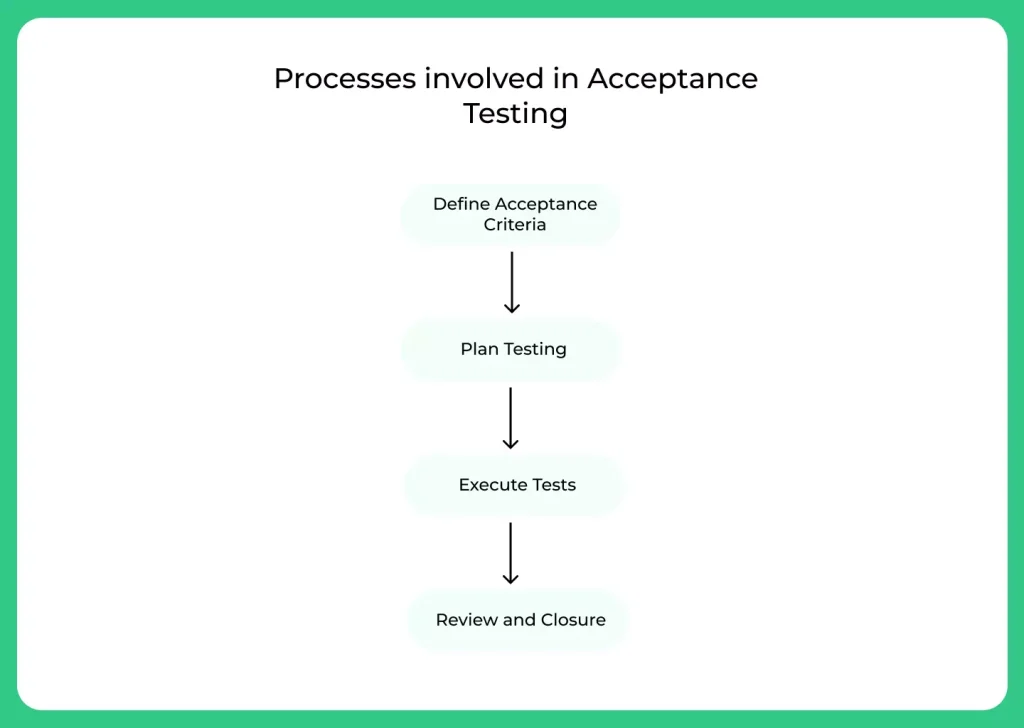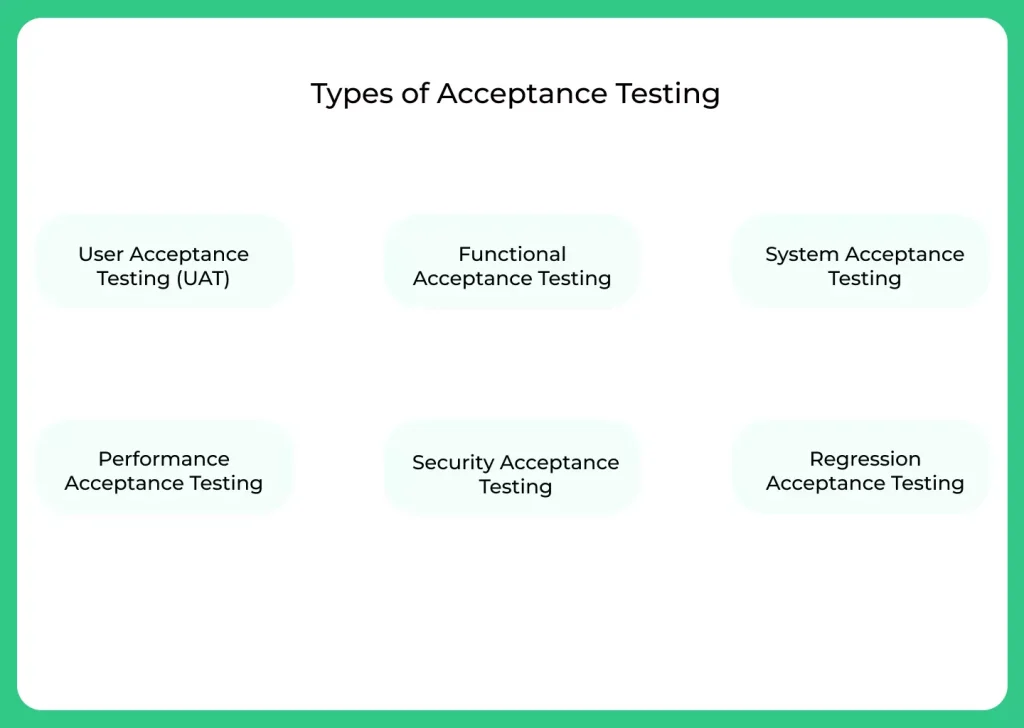Acceptance Testing in Software Engineering
What is Acceptance Testing?
Acceptance testing in Software Engineering is a type of software testing that verifies that a system meets the requirements and specifications that guided its design and development. It is typically performed by the customer or end-user of the system, and is focused on determining whether the system is suitable for use and meets the business and technical requirements that guided its design.
This can include functional testing, performance testing, and other types of testing, and is often used to confirm that the system is ready for release or deployment.

Objectives of Acceptance Testing:
- Verify compliance with customer requirements
- Ensure product functionality and performance
- Provide evidence of product quality and reliability
- Identify and resolve any issues before product release
- Establish confidence in the product among stakeholders.
Processes involved in Acceptance Testing:
It is the process of verifying if a product or system meets the customer’s requirements and expectations. It can include the following steps:

Define acceptance criteria:
Agree on what constitutes acceptance of the product with the customer.
Plan testing:
Determine what testing needs to be done to verify the acceptance criteria, identify test cases and allocate resources.
Execute tests:
Perform the tests, document the results and report any issues found.
Evaluate results:
Compare the results to the acceptance criteria and decide if the product can be accepted.
Review and closure:
Review the process and outcome with stakeholders and close the project if the product is accepted.
To know more about SDLC, you can check our premium SDLC syllabus page : SDLC Syllabus
Types of Acceptance Testing
There are several types of Testing, including:

User Acceptance Testing (UAT):
Testing performed by end-users to verify if the product meets their requirements.
Functional Acceptance Testing:
Testing focused on verifying the product’s functional requirements.
System Acceptance Testing (SAT):
Testing focused on verifying the system as a whole, including all components and interfaces.
Performance Acceptance Testing:
Testing focused on verifying the product’s performance, such as response time and scalability.
Security Acceptance Testing:
Testing focused on verifying the product’s security features and protection against malicious attacks.
Regression Acceptance Testing:
Testing focused on verifying that changes or updates to the product do not negatively impact existing functionality.
Advantages of Acceptance Testing
Disadvantages of Acceptance Testing
- Time-consuming: It requires significant time to plan, design, execute and document the results, which can take longer than other forms of testing.
- Resource-intensive: It requires a significant number of resources, including personnel, hardware, software, and other equipment, which can be expensive.
- Complexity: The testing process can be complex and challenging, especially when dealing with complex systems and integration testing.
- Dependence on end-users: It heavily relies on end-users, who may not have the necessary technical skills or experience to effectively participate in the testing process.
- Limited scope: It is limited in scope, as it only verifies that the system meets specific requirements and does not assess the system’s overall quality.
- Late in the development cycle: It is typically performed late in the development cycle, which can limit the time available to correct issues or make changes.
- Costly to change: If significant changes are required after acceptance testing, it can be costly and time-consuming to implement them.
Final Thoughts :
Acceptance Testing plays a crucial role in ensuring that the final software product meets the business requirements and expectations of the end users. It serves as the last line of validation before the software is released into the production environment. By involving stakeholders and clients directly, this testing phase helps bridge the gap between development and real-world usage. Ultimately, effective acceptance testing increases user satisfaction, reduces post-release defects, and builds confidence in the quality and reliability of the software.
FAQs
System Testing is performed by QA teams to verify the system’s functionality as a whole, focusing on technical aspects. In contrast, User Acceptance Testing (UAT) is conducted by end-users or clients to confirm that the software fulfills real-world business needs.
Acceptance test cases are typically written by business analysts, product owners, or sometimes QA engineers, in collaboration with clients or stakeholders, based on functional requirements and use cases.
Common types of Acceptance Testing include:
- User Acceptance Testing (UAT)
- Business Acceptance Testing (BAT)
- Alpha Testing
- Beta Testing
- Contract Acceptance Testing
Each serves a unique purpose depending on the testing environment and stakeholder involvement.



Login/Signup to comment